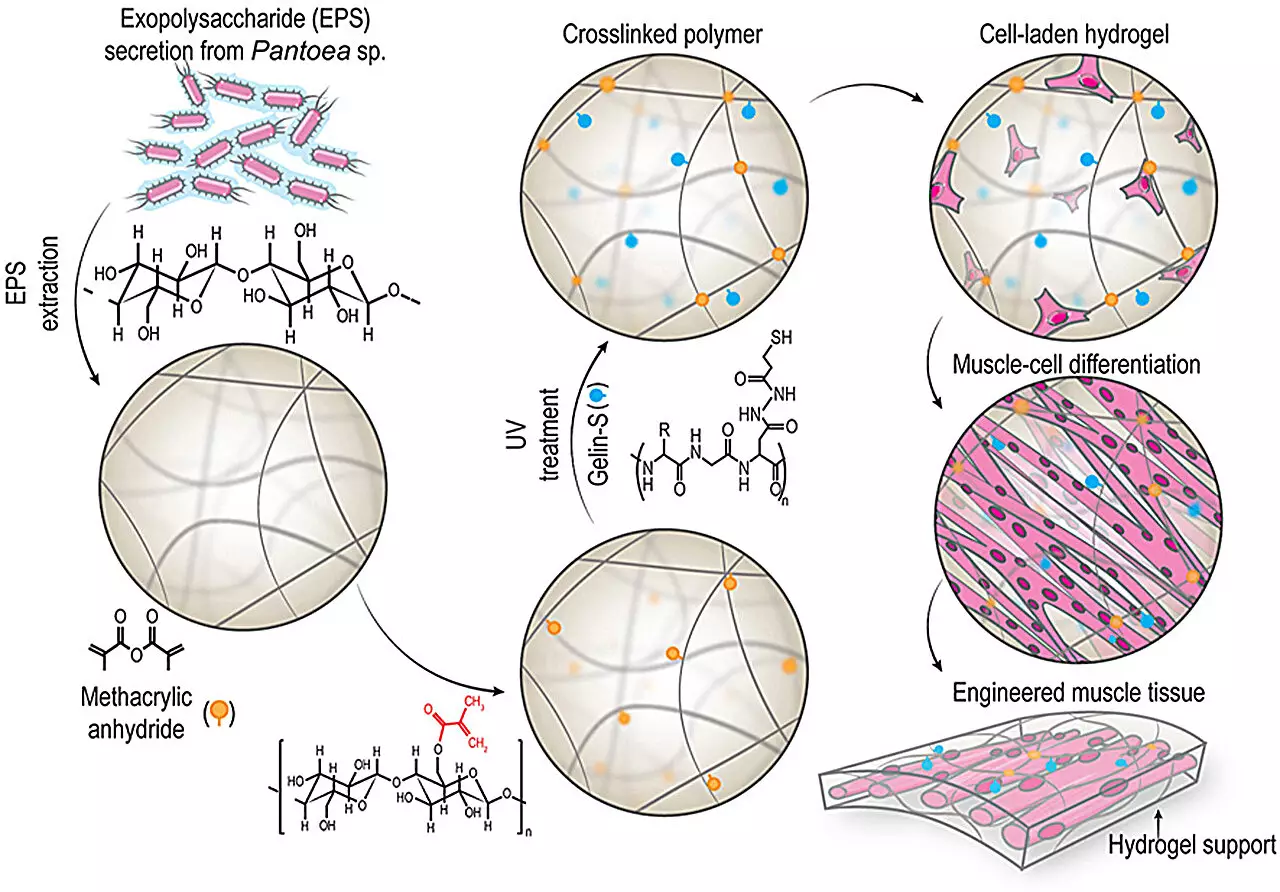Researchers at the Technical University of Denmark have achieved a significant breakthrough in tissue engineering and regenerative medicine. Under the guidance of Alireza Dolatshahi-Pirouz, the team has explored an innovative avenue by leveraging the natural abilities of bacteria to produce a novel biopolymer. This achievement has led to the development of a pioneering hydrogel designed specifically for muscle tissue regeneration. The implications of this research could usher in a new era in therapeutic approaches to muscle injuries.
The newly synthesized biopolymer, known as Pantoan Methacrylate (PAMA), has demonstrated remarkable properties that promote muscle regeneration. As detailed in the journal Bioactive Materials, the study emphasizes that the hydrogel, referred to as ‘bactogel,’ is both elastic and resilient, allowing it to withstand the rigors associated with muscle tissue. What makes this promising is that the researchers were able to achieve almost 100% mechanical recovery when testing the material in vivo, showing enhanced biocompatibility and the ability to effectively heal tissue post-injury.
The team’s animal model trials, conducted on rats, have yielded promising results. They observed a notable increase in muscle tissue formation while simultaneously reducing the presence of fibrous tissue, which often hampers healing. The outcomes of these experiments indicate that the PAMA-based bactogel not only fosters a conducive environment for muscle regeneration but also paves the way for potential human applications in treating diverse muscle injuries across different demographics, including athletes and elderly individuals.
Dolatshahi-Pirouz envisions a future in which this bacterial innovation could revolutionize regenerative medicine. The implications of using bacteria-derived materials extend beyond simply treating injuries; they could lead to the creation of so-called “regenerative bacto-baths,” where bacterial polymers are secreted on demand to facilitate immediate healing. This transformative approach could enhance the efficacy of existing treatments and potentially reduce recovery times significantly.
Despite the successes observed in preliminary studies, it is crucial to address potential challenges before these therapies can be applied in clinical settings. The leap from animal trials to human application often involves rigorous testing to ensure safety and efficacy. Addressing various regulatory hurdles and manufacturing considerations will be necessary to bring this innovative therapy to patients effectively.
Final thoughts indicate that while the PAMA bactogel represents a significant step forward in muscle healing technology, the journey from laboratory scales to real-world therapies remains complex and multifaceted. Continued research and development will be pivotal in unlocking the full potential of this groundbreaking discovery.


Leave a Reply